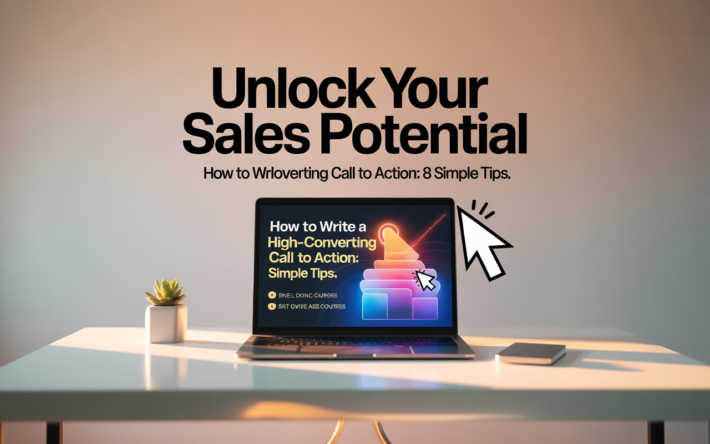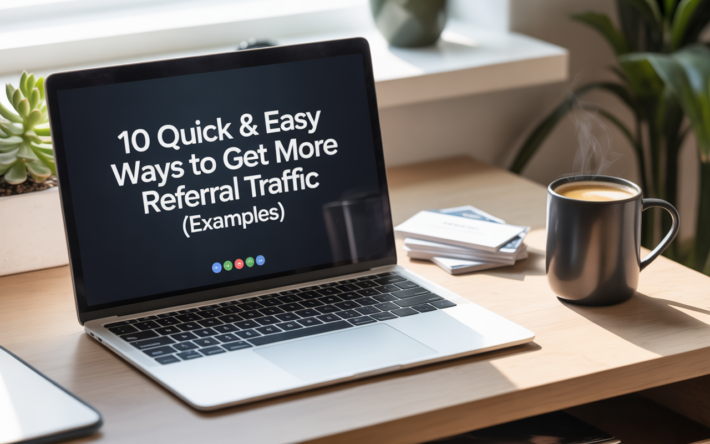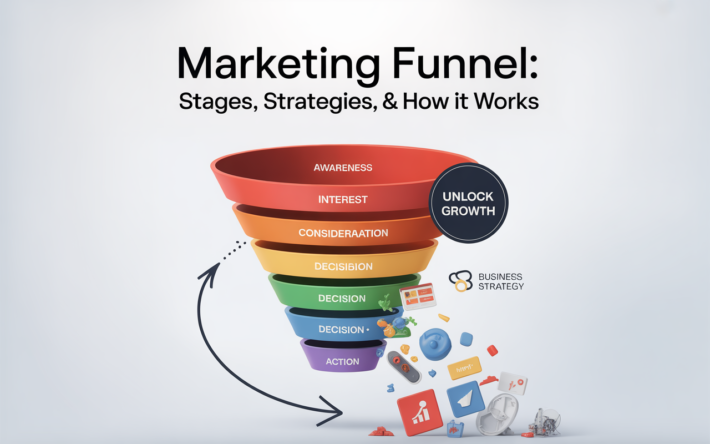How to Generate Leads on LinkedIn: 6 Expert Tips & Strategies
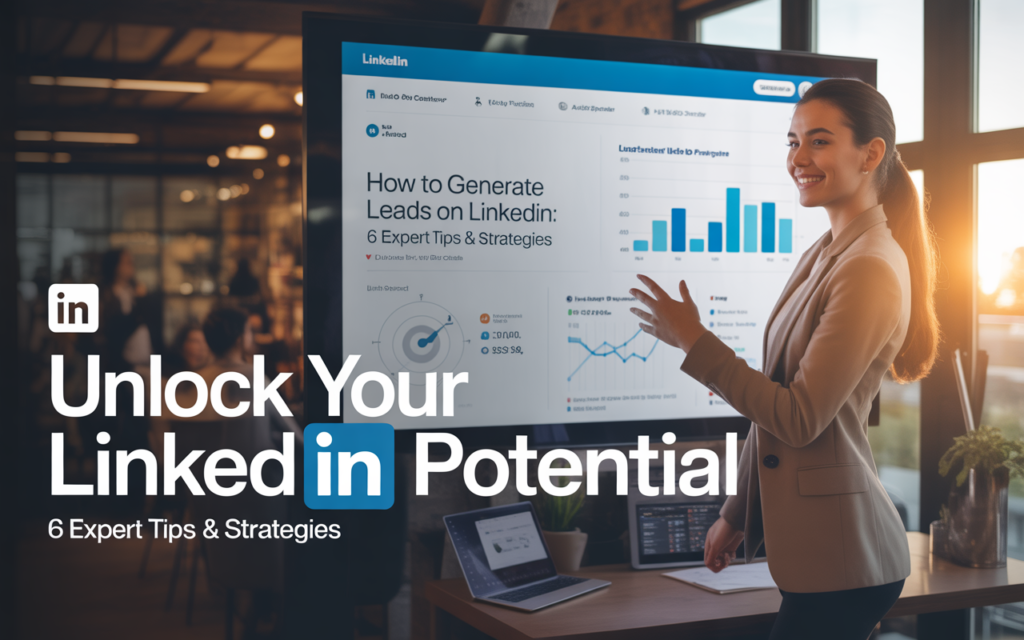
How to generate leads on LinkedIn and unlock the full potential of this platform to transform your professional network into a robust lead generation engine. Whether you’re a small business owner, a marketer, or a sales professional, LinkedIn offers unique opportunities to connect with the right people and turn relationships into valuable leads.
Importance of LinkedIn for Lead Generation:
As the world’s largest professional network, LinkedIn hosts over 900 million members spanning every industry imaginable. Unlike other social platforms, LinkedIn is designed for professional networking, making it the most effective platform for B2B lead generation.
In fact, studies show that 80% of B2B leads on social media come from LinkedIn, highlighting its unmatched potential for building meaningful business connections.
Overview of the Blog: In this guide, we’ll explore six expert strategies to generate leads on LinkedIn effectively. From optimizing your profile to leveraging content, networking techniques, and LinkedIn’s advertising tools, these strategies are designed to help you systematically attract, engage, and convert prospects into loyal clients.
Read More: linkedin ads vs google ads: Which Platform Is Best For Lead Generation?
Optimize Your LinkedIn Profile for Lead Generation

Your efforts to generate leads start with your LinkedIn profile.Think of it as your digital business card—first impressions matter. A well-optimized profile not only attracts potential leads but also establishes your credibility and expertise.
Professional Profile Photo: Choose a high-quality, approachable image. Compared to profiles without photographs, individuals with photos receive 36 times as many messages and 21 times as many profile views.A clear, professional headshot helps potential clients feel a connection even before interacting with you.
Compelling Headline: Your headline is more than just your job title—it’s your value proposition. Clearly state what you do and how you help clients. For example: “Helping SaaS Companies Generate Qualified Leads Through LinkedIn Marketing.” A strong headline can increase the chances of being found in LinkedIn searches.
Detailed Summary: Your summary should tell your story and demonstrate your expertise. Highlight your achievements, share your approach, and focus on how you solve problems for your target audience. Use bullet points for readability and include a call-to-action to encourage profile visitors to connect.
Experience and Skills: Showcase relevant experiences and skills that align with your ideal clients’ needs. Quantify results whenever possible—for instance, “Generated $500K in leads for B2B clients in 12 months.” Highlighting measurable achievements builds trust and authority.
Recommendations and Endorsements: Recommendations and endorsements provide social proof. Encourage satisfied clients or colleagues to leave thoughtful recommendations and endorse your top skills. Profiles with multiple recommendations and endorsements are up to 5 times more likely to attract leads.
Optimizing your LinkedIn profile is the first critical step to turning your network into a lead generation engine.
Read More: Keyword Trends 2025: 10 Things You Need to Know
Build and Nurture a Targeted Network
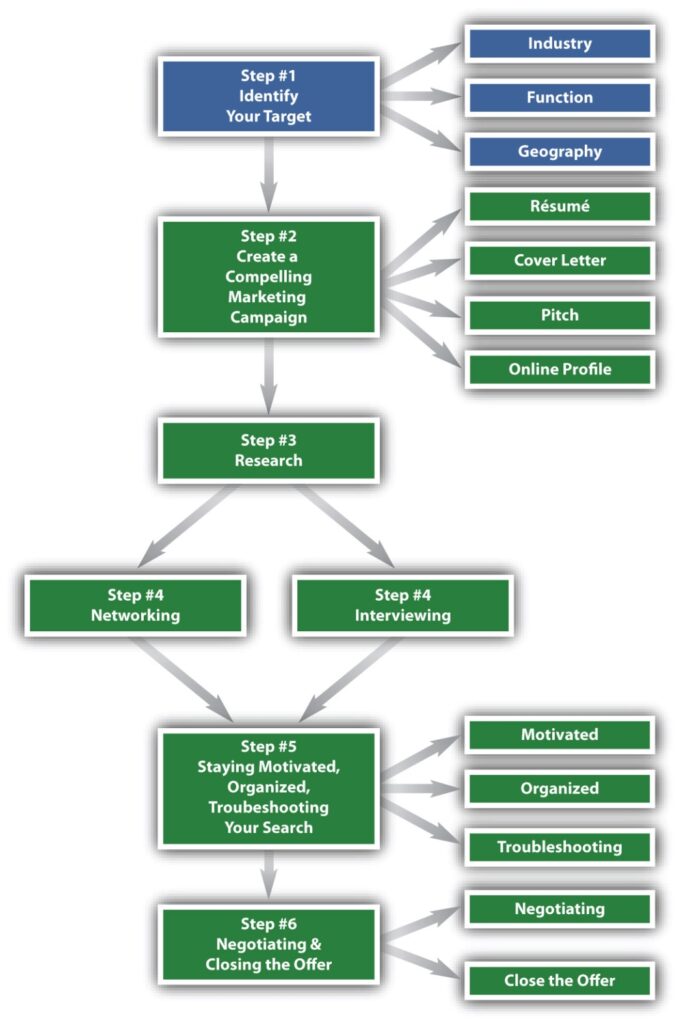
Generating leads on LinkedIn is not just about having a profile—it’s about building meaningful connections with the right people. A targeted network ensures that your efforts reach prospects who are most likely to engage and convert.
Identify Your Ideal Clients: Start by defining your target audience. Consider factors like industry, job role, company size, and geographic location.
For example, if you offer B2B SaaS solutions, your ideal clients might be marketing managers or sales directors at mid-to-large-sized companies. Clear targeting ensures your outreach is effective rather than random.
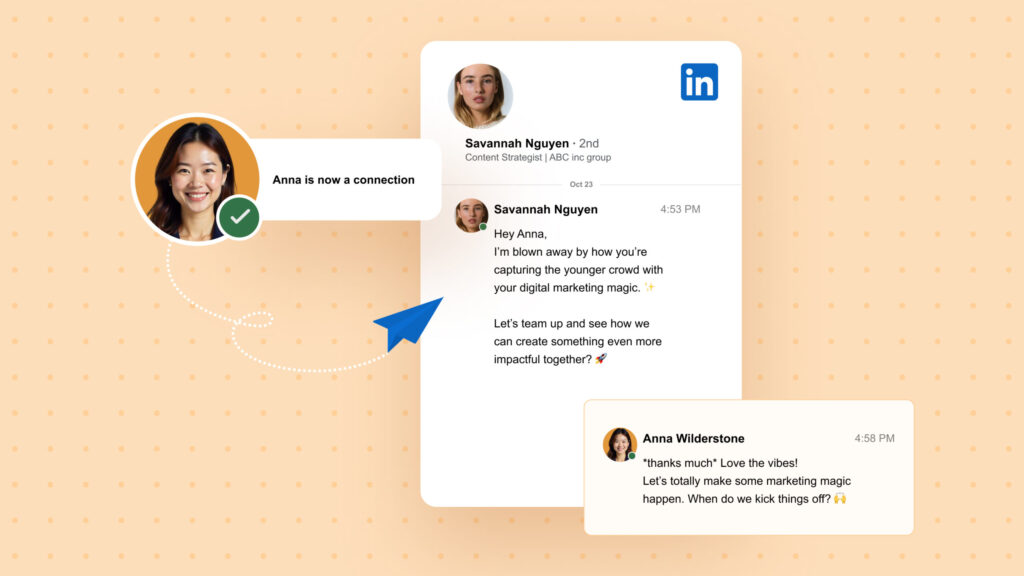
Connect Strategically: When sending connection requests, always personalize your message. Mention shared interests, mutual connections, or why connecting could be mutually beneficial. Personalized requests have a 7% higher acceptance rate compared to generic messages. Avoid spamming; focus on quality over quantity.
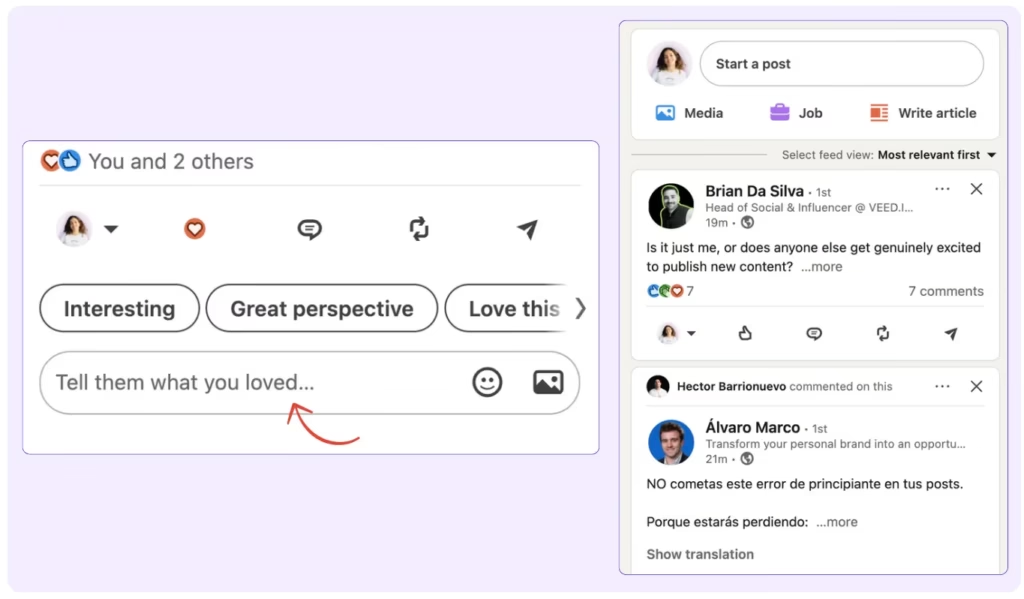
Engage Regularly: Stay visible to your network by liking, commenting on, and sharing relevant content. Engagement builds trust and positions you as an active, knowledgeable professional. Sharing insights, industry news, and helpful resources encourages meaningful interactions that can turn connections into leads.
Utilize LinkedIn’s ‘More Profiles to Browse’: LinkedIn’s suggestion feature helps you discover prospects similar to those already in your network. This is a simple yet powerful way to expand your reach and ensure your network continually grows with the right people.
By carefully building and nurturing a targeted network, you create a steady pipeline of qualified leads who are genuinely interested in what you offer.
Read More: Best Time to Post on LinkedIn for Maximum Engagement
Share Valuable and Engaging Content
Content is the cornerstone of LinkedIn lead generation. Sharing valuable and engaging posts positions you as a thought leader and keeps your audience interested in what you have to offer.
Post Regularly: Consistency is key. Share industry insights, case studies, and success stories to provide real value to your audience. According to LinkedIn, members who post weekly receive five times more profile views than those who post less frequently. Regular posting keeps you top-of-mind for potential leads.
Use Rich Media: Posts with visuals are more engaging. Incorporate images, videos, and infographics to capture attention and convey complex information quickly. Video posts, for example, get three times more engagement than text-only updates on LinkedIn.
Write Articles: Publishing long-form content allows you to establish authority in your niche. Articles provide an opportunity to dive deep into solutions, trends, or strategies relevant to your audience. Well-crafted articles often get shared widely, extending your reach beyond your immediate network.
Include Clear Calls to Action (CTAs): Every piece of content should guide your audience toward the next step. Encourage readers to schedule a call, download a resource, or join a webinar. Clear CTAs turn engagement into actionable leads, ensuring your content drives tangible results.
By sharing valuable, well-structured content, you not only educate your audience but also create opportunities to attract and convert high-quality leads.
Read More: How to Advertise on Facebook: The Visual, Step-by-Step Guide
Leverage LinkedIn’s Native Lead Generation Tools
LinkedIn offers a suite of built-in tools designed specifically to help you capture and nurture leads efficiently. Using these tools strategically can save time and increase the quality of your prospects.

LinkedIn Lead Gen Forms: These pre-filled forms make it easy for potential leads to share their information without leaving LinkedIn. By reducing friction, Lead Gen Forms can increase conversion rates by up to 20% compared to standard landing pages. Use them with posts, sponsored content, or LinkedIn Ads to capture high-quality leads seamlessly.
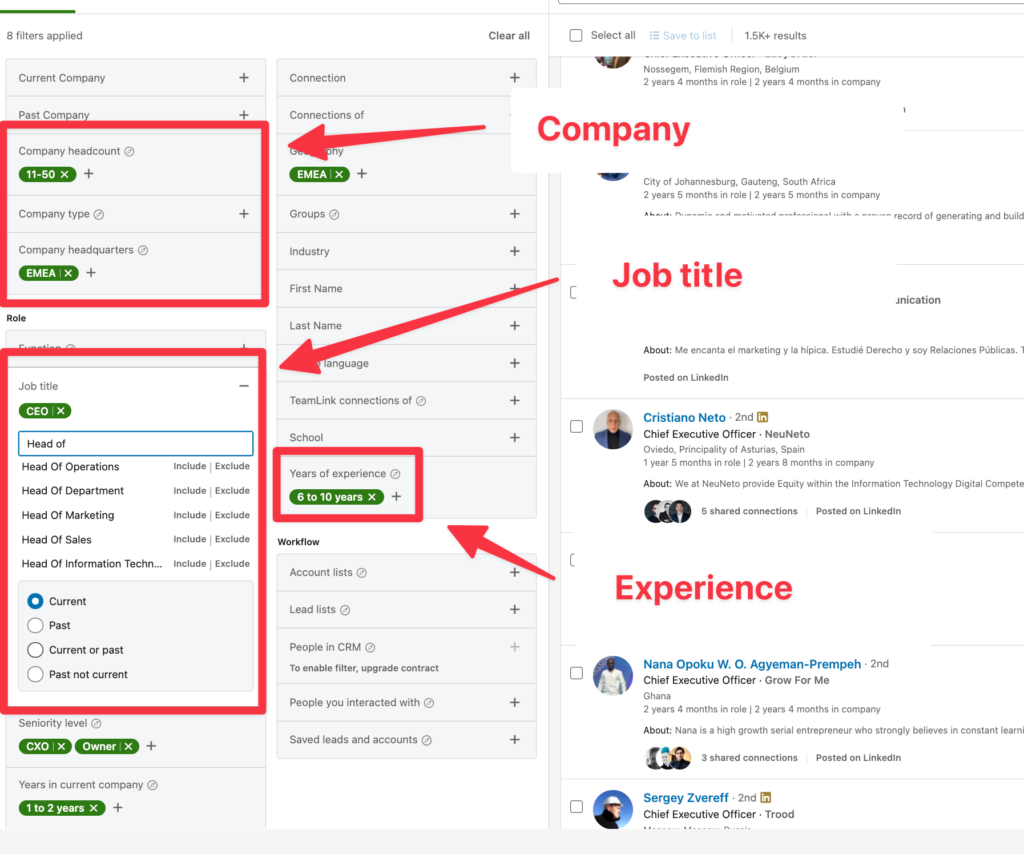
LinkedIn Sales Navigator: This premium tool is ideal for finding and targeting your ideal prospects. With advanced search filters, you can segment leads by industry, company size, role, or geography. Sales Navigator also allows you to save leads, get real-time updates, and receive recommendations, helping you stay proactive in your outreach.
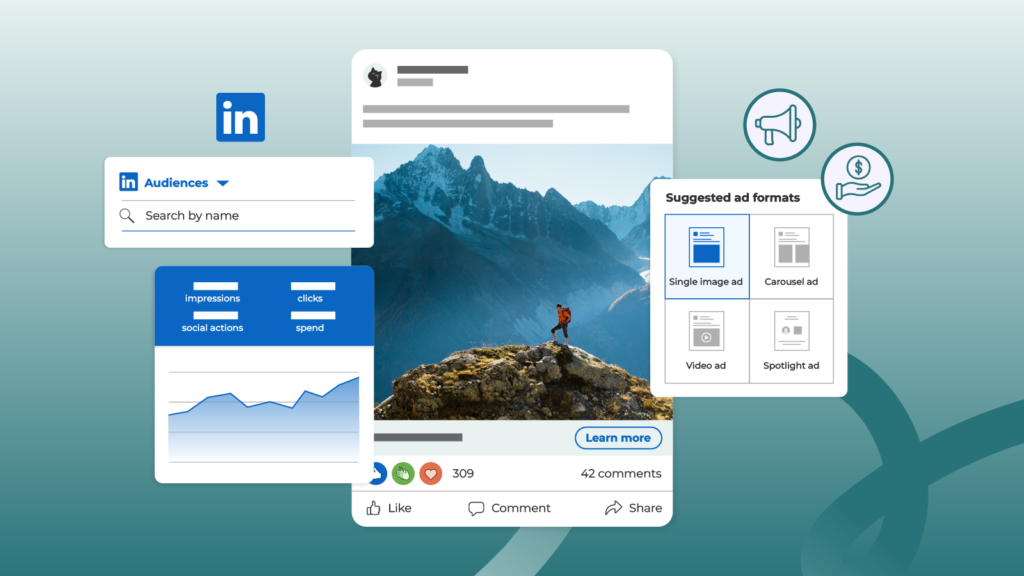
LinkedIn Ads: Running targeted ad campaigns can expand your reach beyond your immediate network. LinkedIn Ads allow precise targeting based on demographics, job titles, company size, and more. Sponsored content, InMail, and dynamic ads are effective ways to drive engagement, capture leads, and support your overall lead generation strategy.
By leveraging these native tools, you can streamline lead capture, reach the right audience, and turn LinkedIn into a powerful engine for business growth.
Read More: How to Optimize Facebook Lead Ads for Better Quality and Higher Volume
Engage with Prospects Through Personalized Messaging
Connecting with prospects is just the first step; meaningful engagement is what converts connections into leads. Personalized messaging builds trust and increases the likelihood of a response.
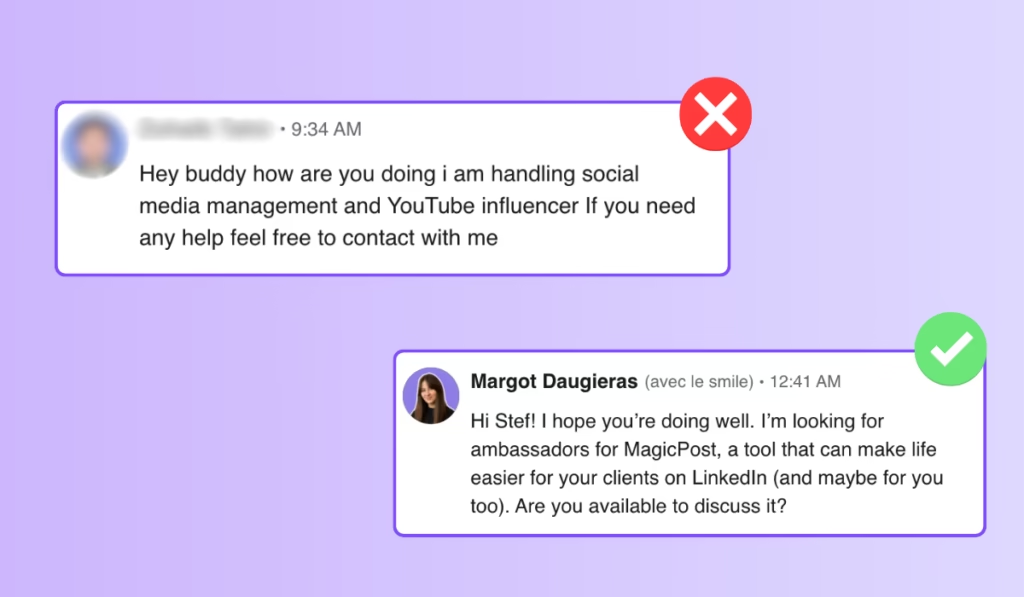
Craft Personalized Messages: Avoid generic outreach like “Let’s connect!” Instead, reference specific details from the prospect’s profile—such as shared connections, recent posts, or industry challenges. Personalized messages have a 70% higher response rate than generic ones.
Provide Value: Always focus on how you can help the prospect. Share insights, articles, or resources that address their specific challenges or goals.
For example, if your prospect is a marketing manager, provide a case study on how your solution improved lead generation for a similar company. Value-driven messages establish credibility and position you as a trusted advisor.
Follow Up: Don’t be discouraged if you don’t get a reply immediately. Send polite, timely follow-ups—usually one week after the initial message. A well-crafted follow-up can remind the prospect of your value and often results in a response that the first message didn’t elicit.
Engaging through personalized messaging ensures that your outreach feels human, relevant, and compelling—turning cold connections into warm, qualified leads.
Read More: Best Ways to Optimize Facebook Lead Ad Campaigns
Measure and Optimize Your Lead Generation Efforts
To ensure your LinkedIn lead generation strategy is effective, you need to track results and refine your approach continuously. Measuring performance helps you understand what’s working and where improvements are needed.
Track Key Metrics: Monitor essential metrics such as connection acceptance rates, message response rates, and lead conversion rates. These numbers reveal how well your outreach and networking efforts are performing and help identify areas for improvement.
Analyze Content Performance: Evaluate which types of posts—articles, videos, infographics, or case studies—generate the most engagement. LinkedIn Analytics provides insights into views, likes, comments, and shares, allowing you to determine what resonates best with your audience.
Adjust Strategies: Use the data to refine your approach. For example, if video posts receive higher engagement, consider increasing your video content. Similarly, if personalized messages yield better response rates, double down on that tactic. Continuous optimization ensures that your lead generation efforts become more efficient and effective over time.
By consistently measuring and optimizing your LinkedIn activities, you can maximize your results and turn your professional network into a sustainable lead generation engine.
Read More: The Visual Facebook Ads Guide for Beginners
Common Mistakes to Avoid in LinkedIn Lead Generation
When it comes to lead generation on LinkedIn, many beginners make mistakes that significantly reduce their chances of success. Understanding what not to do is just as important as knowing the right strategies. Here are some of the most common pitfalls that can hinder your efforts:
- Posting Irregularly or Sharing Irrelevant Content:
Consistency is key when you want to generate leads. Businesses that post relevant, value-driven content on a regular basis are more likely to build trust and engagement. A survey by Content Marketing Institute found that 70% of B2B marketers report LinkedIn as the most effective platform for content marketing, but only if the content aligns with the audience’s interests. Random posts or long gaps between updates can result in missed opportunities for engagement. - Overusing Promotional Messages Instead of Providing Value:
Many newcomers focus only on selling their product or service right away. However, LinkedIn is a professional network where providing value builds credibility. Instead of bombarding prospects with sales pitches, share industry insights, helpful tips, or case studies that showcase your expertise. Studies show that 80% of LinkedIn users prefer to engage with informative and educational content over direct promotions.
By learning how to generate leads on LinkedIn the right way and avoiding these common mistakes, you can sharpen your strategy, build meaningful connections, and turn prospects into loyal customers.
Read More: Facebook Ads Timing: Best Times to Run Successful Campaigns
How to Identify Your Unique Value Proposition (UVP)
When focusing on how to generate leads on LinkedIn, one of the most important steps is clearly defining your Unique Value Proposition (UVP). Your UVP explains why prospects should choose you over competitors and helps position you as a valuable connection in their eyes.
What specific benefit do you provide?
This is the central question your UVP must answer. Whether you offer faster project delivery, innovative solutions, or deep industry expertise, your UVP should be simple, clear, and focused on the value you bring.
For example, a digital marketing consultant might define their UVP as:
“Helping small businesses increase LinkedIn engagement by 50% within 3 months through tailored content strategies.”
This UVP not only highlights the specific benefit (increased engagement) but also shows a measurable result and timeframe.
Why does this matter for lead generation on LinkedIn?
LinkedIn is a competitive space, with millions of professionals vying for attention. A well-defined UVP ensures your profile stands out.
According to LinkedIn’s own research, profiles with a clearly stated value proposition receive more profile views and connection requests than those without.
Additionally, your UVP strengthens your outreach messages. Instead of sending a vague connection request, you can write something like:
“Hi [Name], I help B2B startups improve LinkedIn lead generation by creating targeted content strategies. I’d love to connect and share ideas.”
This shows clear value from the very first message and increases the chances of building a meaningful connection.
In summary, focusing on how to generate leads on LinkedIn starts by identifying what makes you unique. A clear and compelling UVP helps your profile get noticed, improves your outreach effectiveness, and ultimately attracts the right leads.
Read More: How to Find Guest Post Opportunities | “Write for us”
Leveraging LinkedIn Groups for Lead Generation
LinkedIn Groups are communities where professionals gather to discuss industry topics, share insights, and network with peers. When focusing on how to generate leads on LinkedIn, using Groups strategically can be a powerful way to connect with your target audience.
By joining and participating in relevant LinkedIn Groups, you can:
- Connect with industry peers who share similar professional interests.
- Establish your authority by consistently answering questions, providing thoughtful insights, and participating in meaningful conversations.
- Share valuable resources, such as articles, case studies, and industry reports, that provide real value to the group members.
For example, a SaaS company targeting HR professionals joined several HR-focused LinkedIn Groups and regularly shared actionable tips on improving employee engagement.
Within six weeks, they saw a 40% increase in inbound connection requests from decision-makers in their target market, which directly boosted their lead generation efforts.
Active participation in these groups allows you to engage directly with potential leads who are already interested in your niche. Rather than sending cold messages to random profiles, you’re contributing to discussions where your expertise is visible, making your outreach more natural and your profile more trusted.
Studies show that LinkedIn Groups with active discussions attract 60% more profile views for members who engage regularly compared to passive members. This makes them an underutilized but highly effective tool for consistent lead generation on LinkedIn.
In summary, leveraging LinkedIn Groups is a strategic way to build credibility, connect with potential leads, and drive meaningful engagement, all of which contribute to better lead generation on LinkedIn.
Read More: Why Digital Marketing is Better Than Traditional
Importance of Consistency and Patience in Lead Generation
Building a reliable lead pipeline on LinkedIn doesn’t happen overnight. Whether you are wondering how to generate leads on LinkedIn or improving your existing approach, consistency and patience are essential for long-term success.
Here’s why steady effort matters:
- Posting regularly keeps your profile active and visible in your network’s feed. According to LinkedIn data, profiles that post at least once a week receive 5 times more profile views and 10 times more connection requests than inactive profiles. Regular posting helps you stay top of mind for your audience and positions you as an industry thought leader.
- Engaging with your network daily—by liking, commenting, and sharing relevant posts—builds rapport and increases your visibility. This kind of engagement helps turn cold connections into warm leads over time.
- Nurturing connections over time means following up, sharing useful content, and engaging in meaningful conversations without pushing for an immediate sale. Research by HubSpot found that companies that nurture leads see a 50% increase in sales-ready leads at a 33% lower cost.
For example, a B2B consultant who consistently posted weekly insights on industry trends, commented on peers’ posts, and followed up with personalized messages over six months saw a 70% increase in qualified inbound leads compared to the previous period.
Patience combined with persistence helps you build meaningful relationships that result in high-quality leads—those who trust your expertise and are more likely to convert.
By focusing on how to generate leads on LinkedIn with a long-term mindset, you not only improve your visibility but also build a sustainable and effective lead generation strategy.
Conclusion
In this guide, we explored six expert strategies that help you master how to generate leads on LinkedIn effectively:
- Optimize Your LinkedIn Profile – Build a professional and compelling profile that showcases your expertise and attracts prospects.
- Build and Nurture a Targeted Network – Focus on connecting strategically with the right people and engaging consistently.
- Share Valuable and Engaging Content – Post insights, case studies, and helpful resources that provide real value to your audience.
- Leverage LinkedIn’s Native Lead Generation Tools – Use Lead Gen Forms, Sales Navigator, and LinkedIn Ads to capture qualified leads.
- Engage with Prospects Through Personalized Messaging – Craft tailored messages that build trust and address specific challenges.
- Measure and Optimize Your Lead Generation Efforts – Track key performance metrics, analyze content performance, and refine your strategy over time.
Successful lead generation on LinkedIn is not about shortcuts. It requires persistence, regular engagement, providing real value, and patience.
By implementing these strategies consistently, you will build meaningful relationships, increase your professional visibility, and steadily attract high-quality leads that convert into loyal clients.
Start applying these tactics today—optimize your profile, grow a targeted network, share useful content, and engage authentically. Your next lead is just a connection away.
For more tips and insights on effective lead generation, feel free to connect with me on LinkedIn or download our free lead generation guide to accelerate your results.

